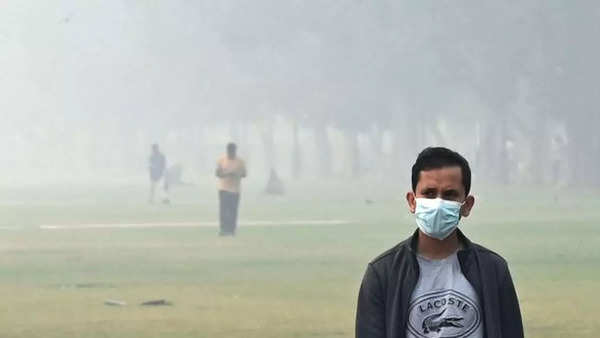This deterioration was attributed to a rise in agricultural fires and unfavorable weather conditions.
Consequently, medical professionals issued alerts regarding exacerbated respiratory problems.
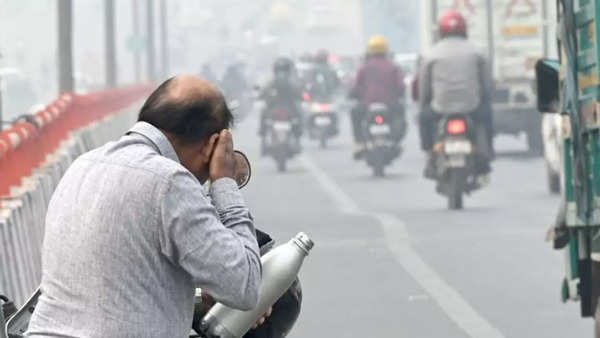
Over the next two weeks, scientists have cautioned about an imminent surge in pollution levels in the Delhi-NCR region.
The situation is alarming, especially considering that the Air Quality Index (AQI) has already surpassed the 400-mark in numerous areas, classifying it as severe.
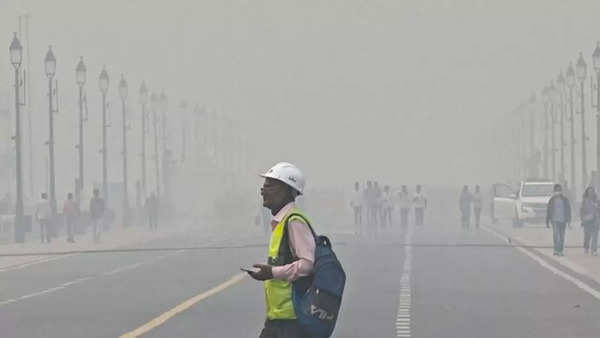
An official from the India Meteorological Department disclosed that visibility at the Safdarjung Observatory diminished to a mere 500 meters at approximately 7 am.
However, as temperatures rose throughout the day, visibility gradually improved to 800 meters.
Cold temperatures give rise to stable atmospheric conditions known as temperature inversions.
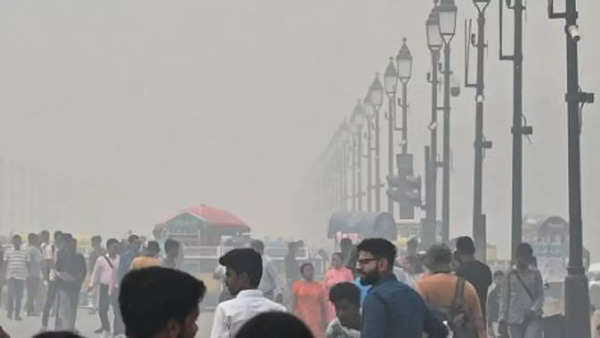
During these inversions, a layer of warm air acts as a lid, trapping cooler air near the ground.
This phenomenon facilitates the accumulation of pollutants, as they become confined within the lower layers of the atmosphere.
By 3 pm, the city’s Air Quality Index (AQI) had climbed to 378.
In the preceding days, the 24-hour average AQI stood at 364 on Wednesday, 359 on Tuesday, 347 on Monday, 325 on Sunday, 304 on Saturday, and 261 on Friday.
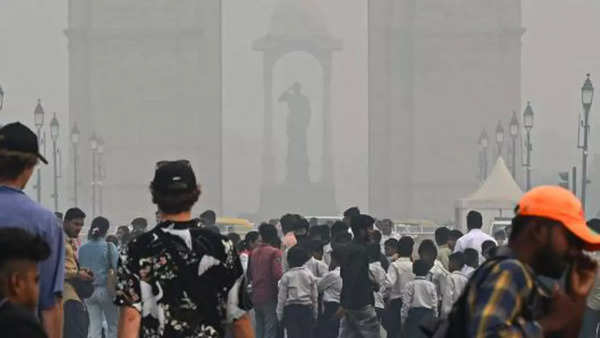
Numerous areas within the city, such as Punjabi Bagh (439), Dwarka Sector-8 (420), Jahangirpuri (403), Rohini (422), Narela (422), Wazirpur (406), Bawana (432), Mundka (439), Anand Vihar (452), and New Moti Bagh (406), registered ‘severe’ air quality levels.
The Air Quality Index (AQI) is categorized as follows:
0 to 50 is considered ‘good.’
51 to 100 is classified as ‘satisfactory.’
101 to 200 falls under the ‘moderate’ category.
201 to 300 is labeled as ‘poor.’
301 to 400 is designated as ‘very poor.’
401 to 500 is categorized as ‘severe.’
In these areas, the concentration of PM2.5, which is fine particulate matter capable of deeply penetrating the respiratory system and potentially causing respiratory issues, exceeded the safe limit of 60 micrograms per cubic meter by a significant margin, ranging from six to seven times the recommended limit.
Health professionals have voiced their concerns regarding the rise in air pollution, which is contributing to an increase in asthma and lung problems among both children and the elderly.
Air pollution on rise: Smog engulfs Delhi
Jugal Kishore, the head of the medicine department at Safdarjung Hospital, stated, “We are witnessing a significant increase in irritative bronchitis infections. We strongly advise individuals with respiratory conditions like chronic bronchitis and asthma to diligently take their prescribed medications and avoid venturing outdoors unless it is absolutely essential.”
Given the notable increase in indoor pollution in Delhi, he recommended that people utilize air purifiers in their homes to help improve indoor air quality.
Mumbai pollution: City wakes up to smog, poor visibility
One of the primary factors contributing to the buildup of pollutants in recent days is the absence of rainfall during this post-monsoon season thus far.
According to government data, Delhi’s air quality in October 2023 was the poorest it has been since 2020.
Meteorologists attribute this decline to the lack of rainfall.
The capital city registered an Air Quality Index (AQI) of 210 in October, which is on par with the AQI for October in the previous year (2022) but higher than the AQI of 173 in October 2021, as reported by the Central Pollution Control Board (CPCB).
In contrast to October 2022, when Delhi received 129 mm of rainfall, and October 2021, with 123 mm of rainfall, October 2023 had just one rainy day, bringing a total of 5.4 mm of precipitation to the region.
During the winter season in Delhi-NCR, unfavorable meteorological conditions, coupled with emissions from sources such as firecrackers, paddy straw burning, and local pollution, collectively contribute to the hazardous air quality levels in the region.
According to an analysis conducted by the Delhi Pollution Control Committee (DPCC), the capital city experiences its peak pollution period from November 1 to November 15.
This coincides with an increase in the number of stubble burning incidents in the neighboring states of Punjab and Haryana.
The Commission for Air Quality Management (CAQM), a statutory body tasked with devising strategies to combat pollution in Delhi-NCR, has reported that the number of stubble burning incidents in Punjab and Haryana has decreased significantly.
Since September 15, there has been a reduction of approximately 56 percent in Punjab and around 40 percent in Haryana, compared to the same period in the previous year.
The Punjab government has set a target to reduce farm fires by 50 percent during the upcoming winter season.
They also aim to completely eliminate stubble burning in six districts within the state.
According to Punjab’s action plan to tackle paddy straw burning, the state has approximately 31 lakh hectares of land dedicated to paddy cultivation.
This is expected to generate roughly 16 million tonnes of paddy straw, specifically non-basmati varieties.
Haryana estimates that around 14.82 lakh hectares of land within the state are allocated for paddy cultivation.
This is anticipated to result in the generation of more than 7.3 million tonnes of paddy straw, excluding the basmati variety.
The state is actively striving to nearly eliminate farm fires during this year, reflecting their commitment to reducing the impact of agricultural burning on air quality and the environment.
According to a numerical model-based system developed by the Indian Institute of Tropical Meteorology (IITM) in Pune, vehicular emissions (constituting 11 percent to 16 percent) and stubble burning (making up seven percent to 16 percent) are currently recognized as the two major contributors to Delhi’s air quality problems.
Delhi environment minister Gopal Rai announced on Wednesday that the city government will impose a ban on construction work in areas where the Air Quality Index (AQI) remains above the 400-mark for five consecutive days.
Last month, the Delhi government initiated a 15-point action plan aimed at alleviating air pollution during the winter season.
The plan places a significant emphasis on tackling dust pollution, controlling vehicular emissions, and eliminating the open burning of garbage.
Consistent with the practice of the past three years, the Delhi government also recently declared a comprehensive ban on the manufacturing, storage, sale, and use of firecrackers within the city.
The Delhi government has initiated the “Red Light on Gaadi Off” campaign to combat vehicular pollution. Additionally, they intend to enhance public transportation and reduce vehicular pollution by enlisting 1,000 private Compressed Natural Gas (CNG) buses.
A new study conducted by researchers from the Global Observatory on Pollution and Health at Boston College, the Indian Council of Medical Research, and the Public Health Foundation of India revealed that air pollution in India led to 1.67 million deaths in 2019.
This represented the highest pollution-related death toll of any country globally. The study also estimated that these pollution-related deaths accounted for USD 36.8 billion in economic losses.
ALL PHOTOS: ANINDYA CHATTOPADHYAY (TOI)
With agency inputs
